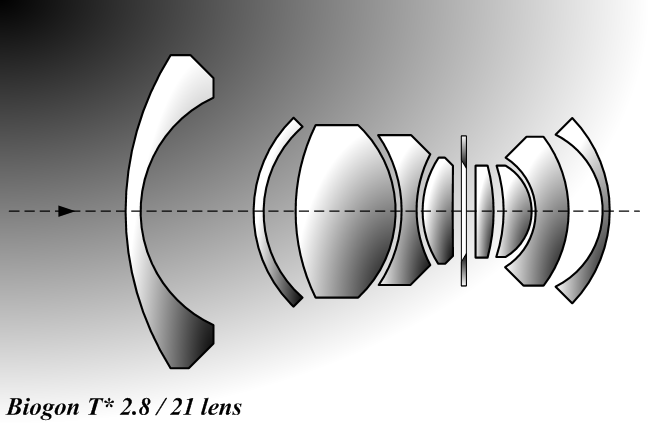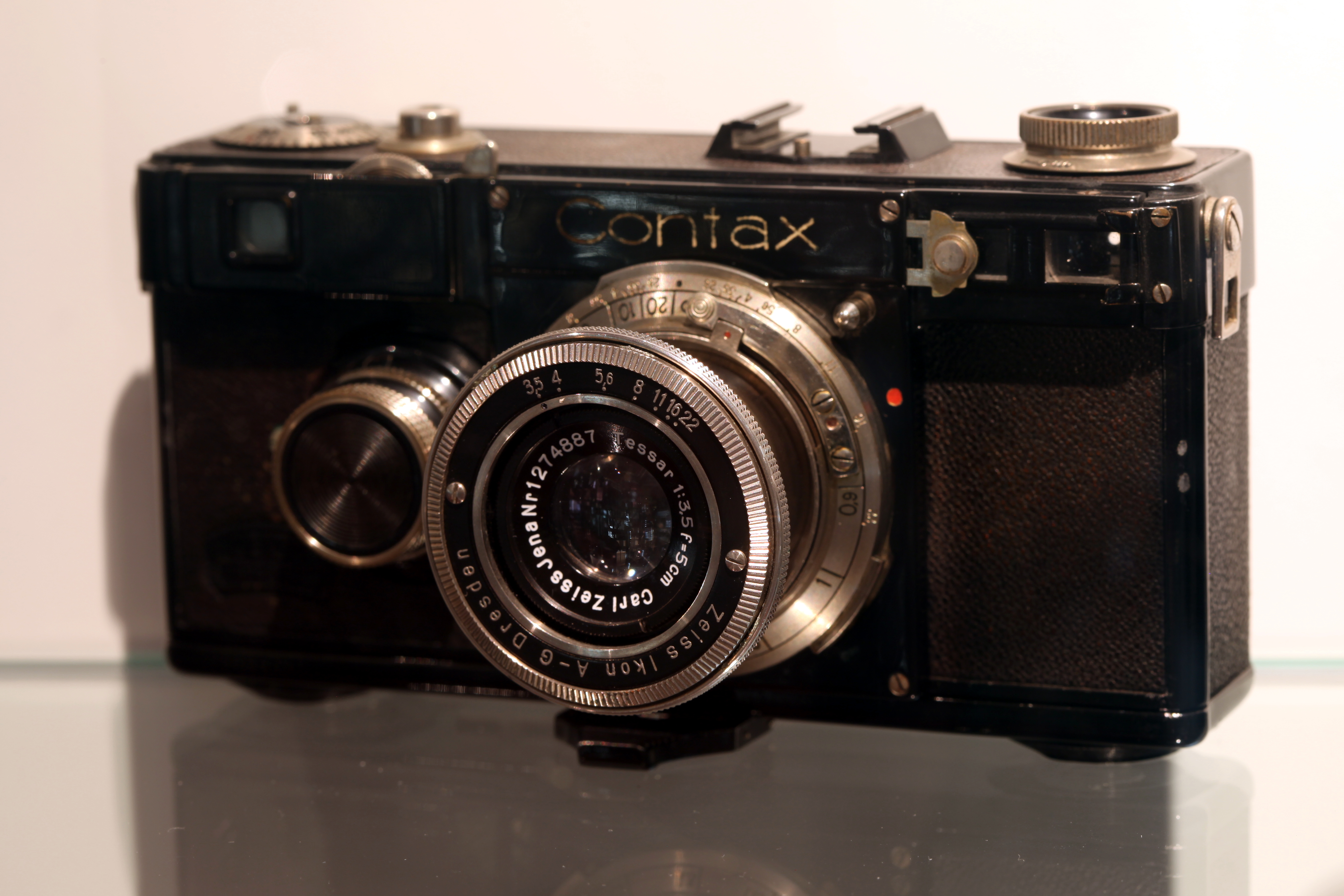|
Ludwig Bertele
Ludwig Jakob Bertele (25 December 1900 – 16 November 1985) was a German optics constructor. His developments received universal recognition and serve as a basis for considerable part of the optical designs used today. Biography Ludwig Jakob Bertele was born 25 December 1900 in Munich, to an architect's family. At Ernemann In 1916, Bertele was employed as the assistant of an optics designer at Rodenstock in Munich. In 1919, he moved to Dresden to work for Heinrich Ernemann at under the supervision of August Klughardt, as a designer of optics. In the same year, Bertele would begin the development of the ' design. Its basis was the optical scheme of the Ultrastigmat cinema lens, a modified Cooke triplet, which had been developed by Charles C. Minor in 1916 and produced by Gundlach Company. The main purpose of Bertele's developmental work was to increase the light-gathering power of a lens as well as diminishing optical aberration. In 1923, after four years of development, ... [...More Info...] [...Related Items...] OR: [Wikipedia] [Google] [Baidu] |
Munich
Munich is the capital and most populous city of Bavaria, Germany. As of 30 November 2024, its population was 1,604,384, making it the third-largest city in Germany after Berlin and Hamburg. Munich is the largest city in Germany that is not a state of its own. It ranks as the 11th-largest city in the European Union. The metropolitan area has around 3 million inhabitants, and the broader Munich Metropolitan Region is home to about 6.2 million people. It is the List of EU metropolitan regions by GDP#2021 ranking of top four German metropolitan regions, third largest metropolitan region by GDP in the European Union. Munich is located on the river Isar north of the Alps. It is the seat of the Upper Bavaria, Upper Bavarian administrative region. With 4,500 people per km2, Munich is Germany's most densely populated municipality. It is also the second-largest city in the Bavarian language, Bavarian dialect area after Vienna. The first record of Munich dates to 1158. The city ha ... [...More Info...] [...Related Items...] OR: [Wikipedia] [Google] [Baidu] |
ICA AG
ICA, Ica, or ica may refer to: Companies and organizations * Empresas ICA, a Mexican construction company * ICA AB, a Swedish retail food business, formerly named ICA Ahold AB * Indoor Cricket Australia * Informatics Corporation of America, a private health information technology company * Innovative Communications Alliance, between Microsoft and Nortel * Institute of Combinatorics and its Applications, in Winnipeg, Canada * Institute of Cultural Affairs International, an international non-profit organization * Insulation Council of Australia and New Zealand, an industry trade group * Interbank Card Association, now known as Mastercard * Interfaculty Committee Agraria, an association of over 60 biological science universities * Intermuseum Conservation Association * , ''Internationale Camera Actiengesellschaft'', German camera maker that became Zeiss Ikon * International Cartographic Association * International Chiropractors Association * International Clarinet Association * ... [...More Info...] [...Related Items...] OR: [Wikipedia] [Google] [Baidu] |
1936 Summer Olympics
The 1936 Summer Olympics (), officially the Games of the XI Olympiad () and officially branded as Berlin 1936, were an international multi-sport event held from 1 to 16 August 1936 in Berlin, then capital of Nazi Germany. Berlin won the bid to host the Games over Barcelona on the 29th IOC Session on 26 April 1931. The 1936 Games marked the second and most recent time the International Olympic Committee gathered to vote in a city bidding to host those Games. Later rule modifications forbade cities hosting the bid vote from being awarded the games. To outdo the 1932 Summer Olympics, 1932 Los Angeles Games, Adolf Hitler had Olympiastadion (Berlin), a new 100,000-seat track and field stadium built, as well as six gymnasiums and other smaller arenas. The Games were the first to be Fernsehsender Paul Nipkow, televised, with radio broadcasts reaching 41 countries.Rader, Benjamin G. "American Sports: From the Age of Folk Games to the Age of Televised Sports", 5th ed. Filmmaker Leni Ri ... [...More Info...] [...Related Items...] OR: [Wikipedia] [Google] [Baidu] |
Biogon
Biogon is the brand name of Carl Zeiss for a series of photographic camera lenses, first introduced in 1934. Biogons are typically wide-angle lenses. History ''Biogon'' (I), 1934 File:Bertele-Zeiss Biogon (1934).svg, Zeiss ''Biogon'' by Bertele (1934), from US 2,084,309 File:Bertele US2549159A (Aviotar, 1947).svg, Wild ''Aviotar'' by Bertele (1947), from US 2,549,159 File:Jupiter-12 (Contax-Kiev lens mount).JPG, KMZ ''Jupiter-12'' lens The first ''Biogon'' lens (2.8 / 3.5 cm, an asymmetric design featuring seven elements in four groups) was designed in 1934 by Ludwig Bertele while he was working for Zeiss, as a modification of his earlier '' Sonnar'' design (1929). The ''Biogon'' was assigned to Zeiss Ikon Dresden and marketed with the Contax rangefinder camera. It was produced by Carl Zeiss starting in approximately 1937, first in Jena, then a redesigned version was built in Oberkochen. Bertele would go on to reuse the design for the Wild ''Aviotar''. After Wor ... [...More Info...] [...Related Items...] OR: [Wikipedia] [Google] [Baidu] |
Focal Length
The focal length of an Optics, optical system is a measure of how strongly the system converges or diverges light; it is the Multiplicative inverse, inverse of the system's optical power. A positive focal length indicates that a system Convergence (optics), converges light, while a negative focal length indicates that the system Divergence (optics), diverges light. A system with a shorter focal length bends the Ray (optics), rays more sharply, bringing them to a focus in a shorter distance or diverging them more quickly. For the special case of a thin lens in air, a positive focal length is the distance over which initially Collimated beam, collimated (parallel) rays are brought to a Focus (optics), focus, or alternatively a negative focal length indicates how far in front of the lens a point source must be located to form a collimated beam. For more general optical systems, the focal length has no intuitive meaning; it is simply the inverse of the system's optical power. In mos ... [...More Info...] [...Related Items...] OR: [Wikipedia] [Google] [Baidu] |
Contax
Contax (stylised as CONTAX in the Yashica/Kyocera era) began as a German camera model in the Zeiss Ikon line in 1932, and later became a brand name. The early cameras were among the finest in the world, typically featuring high quality Carl Zeiss AG, Zeiss interchangeable Photographic lens, lenses. The final products under the Contax name were a line of 135 film, 35 mm, medium format, and digital cameras engineered and manufactured by Japanese multinational Kyocera, and featuring modern Zeiss optics. In 2005, Kyocera announced that it would no longer produce Contax cameras. The rights to the brand are currently part of Carl Zeiss AG, but no Contax cameras are currently in production, and the brand is considered dormant. Historical overview While the firm of Ernst Leitz of Wetzlar established the 24 mm × 36 mm negative format on perforated 35 mm movie film as a viable photographic system, Zeiss Ikon of Dresden decided to produce a competitor designed to b ... [...More Info...] [...Related Items...] OR: [Wikipedia] [Google] [Baidu] |
Display Contrast
In physics and digital imaging, contrast is a quantifiable property used to describe the difference in appearance between elements within a visual field. It is closely linked with the perceived brightness of objects and is typically defined by specific formulas that involve the luminances of the stimuli. For example, contrast can be quantified as ΔL/L near the luminance threshold, known as Weber contrast, or as LH/LL at much higher luminances. Further, contrast can result from differences in chromaticity, which are specified by colorimetric characteristics such as the color difference ΔE in the CIE 1976 UCS (Uniform Colour Space). Understanding contrast is crucial in fields such as imaging and display technologies, where it significantly affects the quality of visual content rendering. The contrast of electronic visual displays is influenced by the type of signal driving mechanism used, which can be either analog or digital. This mechanism directly influences how well th ... [...More Info...] [...Related Items...] OR: [Wikipedia] [Google] [Baidu] |
Sony A-mount
is a Japanese multinational conglomerate headquartered at Sony City in Minato, Tokyo, Japan. The Sony Group encompasses various businesses, including Sony Corporation (electronics), Sony Semiconductor Solutions (imaging and sensing), Sony Entertainment (including Sony Pictures and Sony Music Group), Sony Interactive Entertainment (video games), Sony Financial Group, and others. Sony was founded in 1946 as by Masaru Ibuka and Akio Morita. In 1958, the company adopted the name Initially an electronics firm, it gained early recognition for products such as the TR-55 transistor radio and the CV-2000 home video tape recorder, contributing significantly to Japan's post-war economic recovery. After Ibuka's retirement in the 1970s, Morita served as chairman until 1994, overseeing Sony's rise as a global brand recognized for innovation in consumer electronics. Landmark products included the Trinitron color television, the Walkman portable audio player, and the co-developmen ... [...More Info...] [...Related Items...] OR: [Wikipedia] [Google] [Baidu] |
Tessar
The ''Tessar'' is a photographic lens design conceived by the German physicist Dr. Paul Rudolph in 1902 while he worked at the Zeiss optical company and patented by Zeiss in Germany; the lens type is usually known as the Zeiss ''Tessar''. Since its introduction, millions of ''Tessar'' and ''Tessar''-derived lenses have been manufactured by Zeiss and other manufacturers, and are still produced as excellent intermediate aperture lenses. The ''Tessar'' design uses four spherical lens elements in three groups, one positive crown glass element at the front, one negative flint glass element at the center and a negative concave flint glass element cemented with a positive convex crown glass element at the rear. History File:Rudolph US444714A (Protar, 1890).svg, Zeiss ''Protar'' (aka ''Anastigmat''; Rudolph, 1890) File:Taylor US568052A (Cooke Triplet, 1893 Fig 11).svg, Cooke ''Triplet'' ( Taylor, 1893) File:Aldis GB16640-95 (Stigmatic, 1895).svg, Dallmeyer ''Stigmatic'' (Aldis, ... [...More Info...] [...Related Items...] OR: [Wikipedia] [Google] [Baidu] |
German Language
German (, ) is a West Germanic language in the Indo-European language family, mainly spoken in Western Europe, Western and Central Europe. It is the majority and Official language, official (or co-official) language in Germany, Austria, Switzerland, and Liechtenstein. It is also an official language of Luxembourg, German-speaking Community of Belgium, Belgium and the Italian autonomous province of South Tyrol, as well as a recognized national language in Namibia. There are also notable German-speaking communities in other parts of Europe, including: Poland (Upper Silesia), the Czech Republic (North Bohemia), Denmark (South Jutland County, North Schleswig), Slovakia (Krahule), Germans of Romania, Romania, Hungary (Sopron), and France (European Collectivity of Alsace, Alsace). Overseas, sizeable communities of German-speakers are found in the Americas. German is one of the global language system, major languages of the world, with nearly 80 million native speakers and over 130 mi ... [...More Info...] [...Related Items...] OR: [Wikipedia] [Google] [Baidu] |
Zeiss Sonnar
The Zeiss Sonnar is a photographic lens originally designed by Dr. Ludwig Bertele in 1929 and patented by Zeiss Ikon. It was notable for its relatively light weight, simple design and fast aperture. Naming The name "Sonnar" is derived from the German word " Sonne", meaning sun. It was originally a tradename owned by in for a Tessar-like lens. Sontheim's coat of arms includes a symbol of the sun. Nettel merged with August Nagel's in 1919. The resulting AG in Stuttgart was one of the companies that merged to form the Zeiss Ikon AG in 1926. When the modern Zeiss lens was designed by Bertele, Zeiss re-used the old Nettel tradename in order to build on the sun association to emphasize on the lens' large aperture (), which was much greater than many other lenses available at the time. History File:Taylor US568052A (Cooke Triplet, 1893 Fig 11).svg, '' Cooke triplet'' ( Taylor, 1893, per US 568,052) File:Minor US1360667A (Ultrastigmat, 1916).svg, ''Ultrastigmat'' (Minor, 19 ... [...More Info...] [...Related Items...] OR: [Wikipedia] [Google] [Baidu] |




